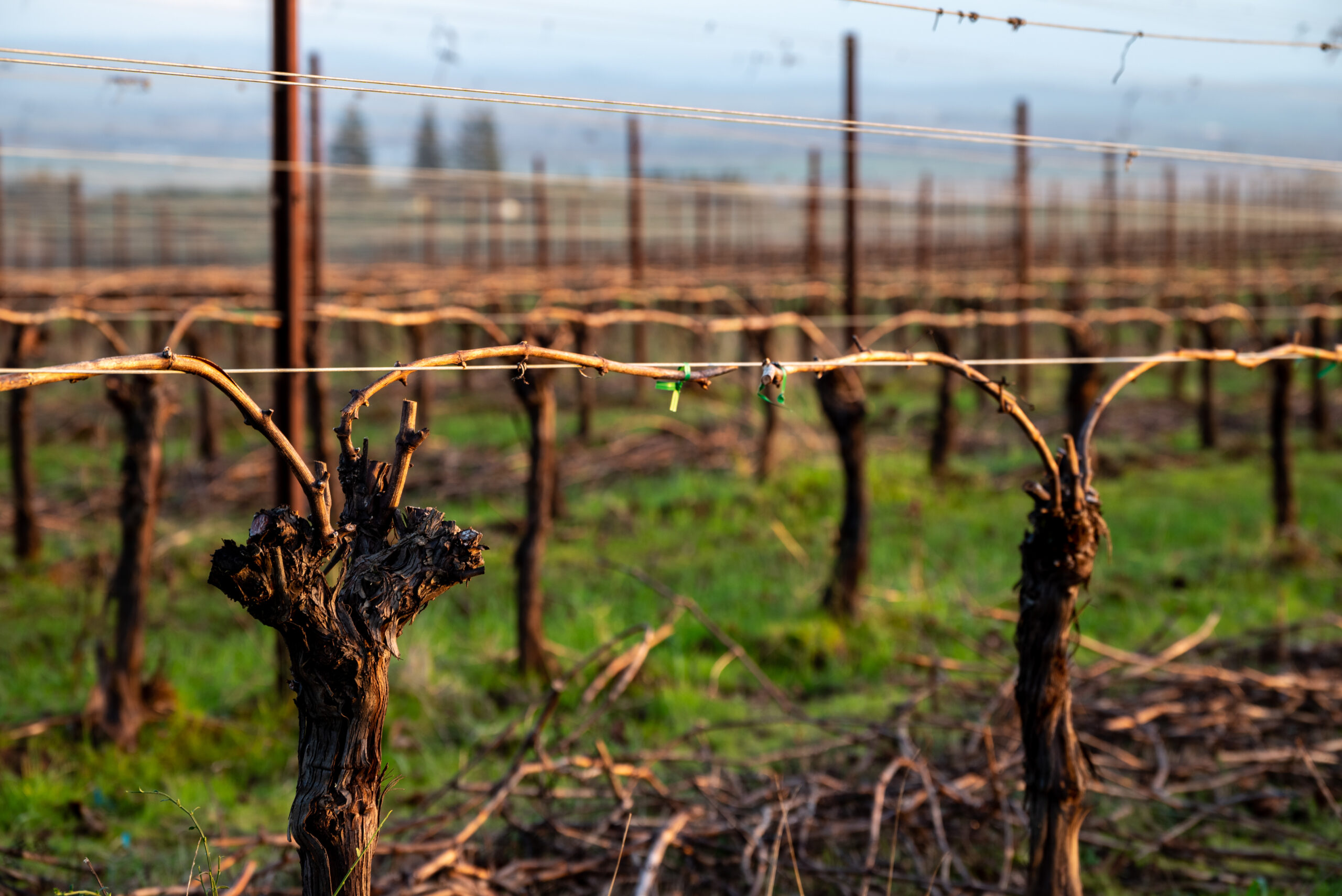Plantations
The age of the vines of Château La Borie varies from 5 years or less for recent plantations to more than 20 years for old vines. Click on the image below to view the corresponding cadastral plan:
At the end of April, beginning of May, we plant the plots prepared the previous year.
The planting density is 4,040 vines per hectare.
The rows of vines have a spacing of 2.25 m and the feet are spaced 1.10 m apart on the row.
SIZE
Pruning starts at the beginning of November and ends at the beginning of March.
Pre-cutting is carried out beforehand to facilitate the task of the tailors.
The entire estate is conducted on iron wire, the pruning is therefore of the “cordon de royat” type.
Electric pruners work with batteries worn as a belt.
The vine shoots are crushed by a grinder and buried in the ground where they will decompose to give natural organic matter necessary for the growth of plants.
By way of indication, to imagine the extent of the task, let us carry out a little mathematical exercise: there are 4,040 vines per hectare and the estate comprises 75 hectares, i.e. we must prune 300,000 vines on which there are has on average 12 vine shoots, i.e. an approximate total of 3,600,000 pruning strokes (the truth is closer to double!).

Trellising

The entire estate is built on wire.
Wire management facilitates the maintenance of the vines and improves the quality of production.
With each new plantation, the trellising is reconstituted as a whole.
This reconstitution is done in July of the year of planting.
We opted for 1.80 meter high stakes drilled every 10 centimeters which allows us to adjust the height of the wires precisely. The stakes are planted using a post driver mounted on a tractor. The wires are unrolled 4 by 4 using a tractor. At the end of the row, stems mounted on discs buried 1 meter deep are installed using an auger. The lifting wires are mobile, they are raised mechanically in May and lowered during pruning.
The trellising regularly undergoes generally mechanical damage, so we have to carry out repairs before bud break.
THE ATTACHMENT
We are in a region where the mistral (dominant wind) blows hard, so it is essential to tie up the young vines. This manual operation is done from March (from pruning) until July.
Soil
Routing
During the spring, we prepare the land that will be planted the following year. This consists of digging up the plot in depth using a plow that goes down to about 0.80 m and adding basic fertilizers. We take the opportunity to extract the large stones that have risen to the surface and to remove any roots. This operation is very important because it determines the quality and longevity of the future plantation.
Plowing
Plowing is done very regularly from February to August.
They are essential for: soil aeration, soil loosening, mechanical weeding, retention of rainwater, … The elders report that plowing is worth two waterings. We use an inter-vine plow that plows between the vines, which avoids the use of chemical weedkillers.
Manure
During the winter, about 600 tons of lavender straw from the neighboring distillery are spread. This significant contribution of organic matter allows the harmonious development of the vine.
A supplement of mineral manure based on potassium and magnesia makes it possible to compensate for the annual export of the vine. The observation of the vegetation during the vegetative period, allows us to finely control our manure by foliar contributions of trace elements.
Plant replacement
Vines regularly die for various reasons (mechanical destruction, lightning strike, competition from the surrounding environment, etc.). Each year, we therefore replace these in February.
It is also a qualitative element (if 10% of vines are missing, the remaining 90% will have to produce 10% more!).
Uprooting stumps
During the month of October, we uproot the plots that need to be.
These plots will be at rest for at least 5 years, then we will grow cereals to ensure crop rotation.
Come and discover the vineyards of Château La Borie

